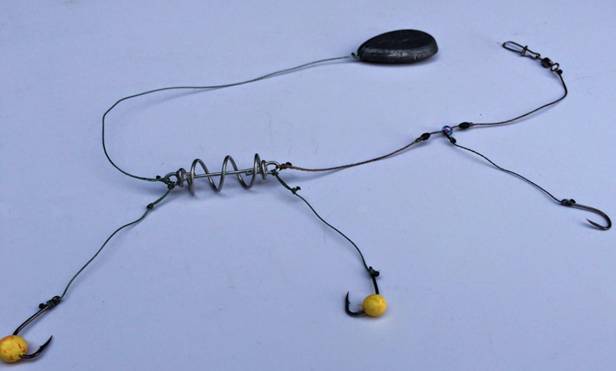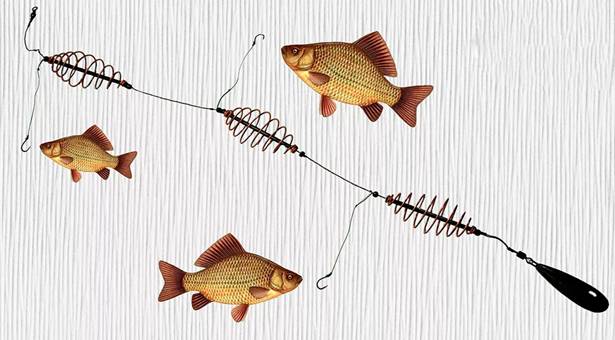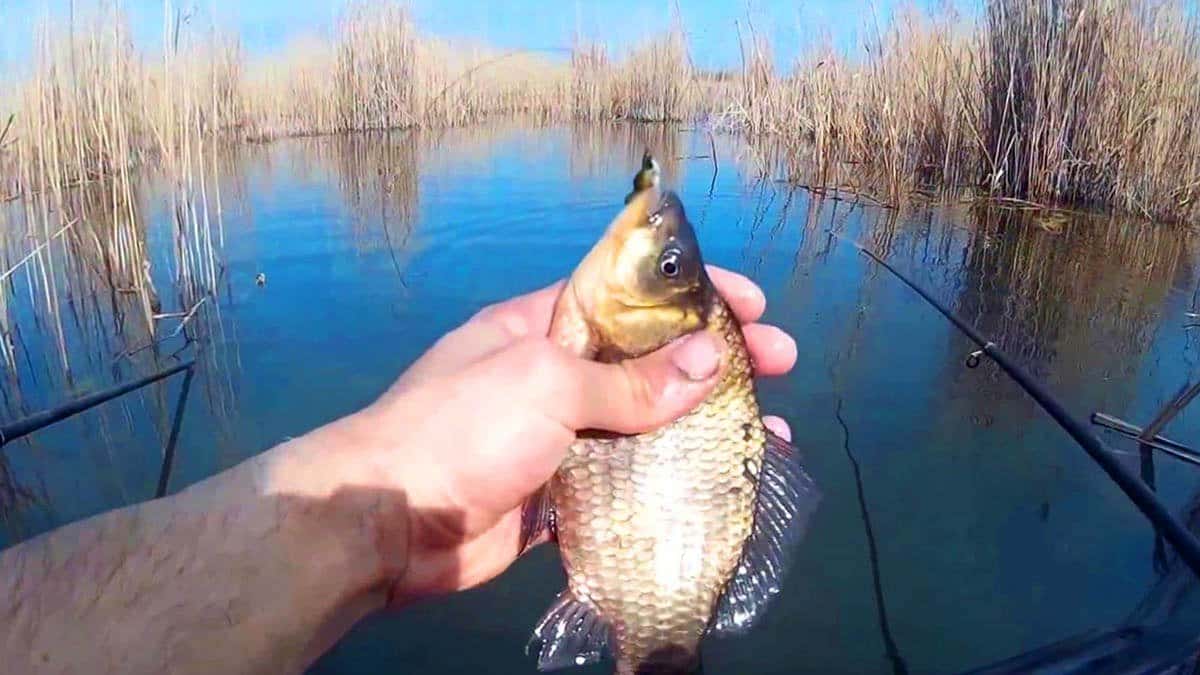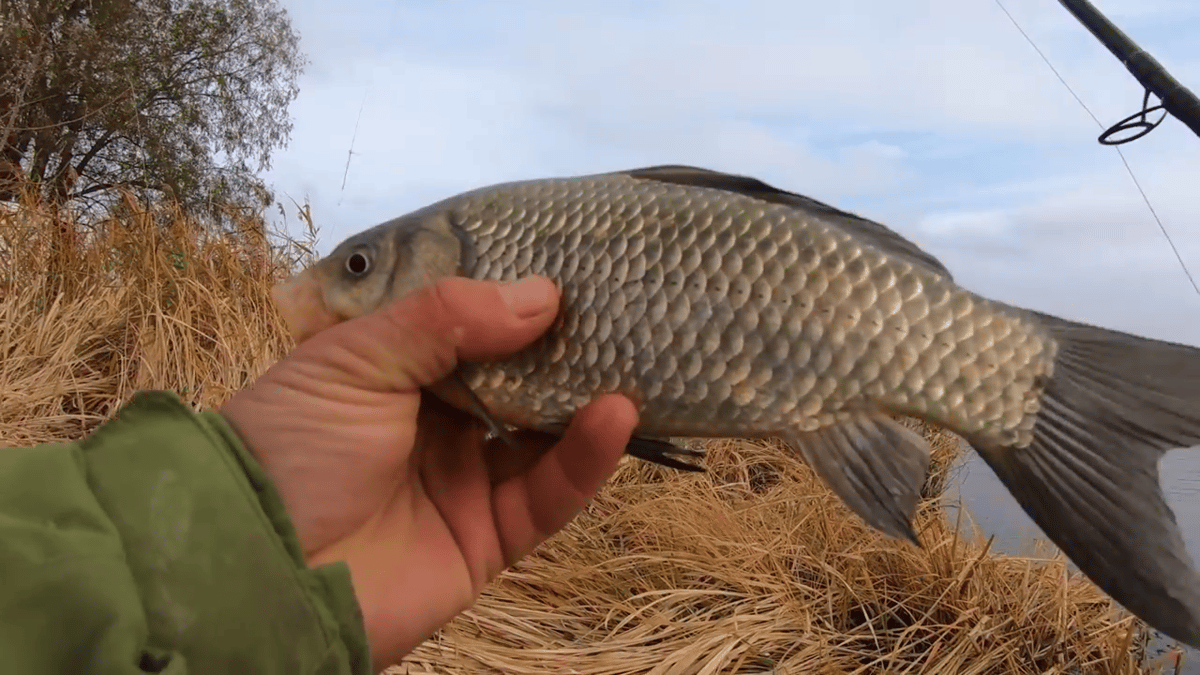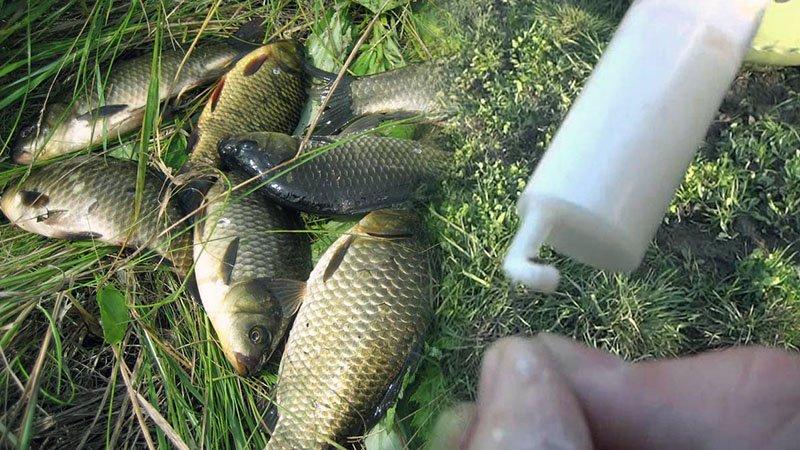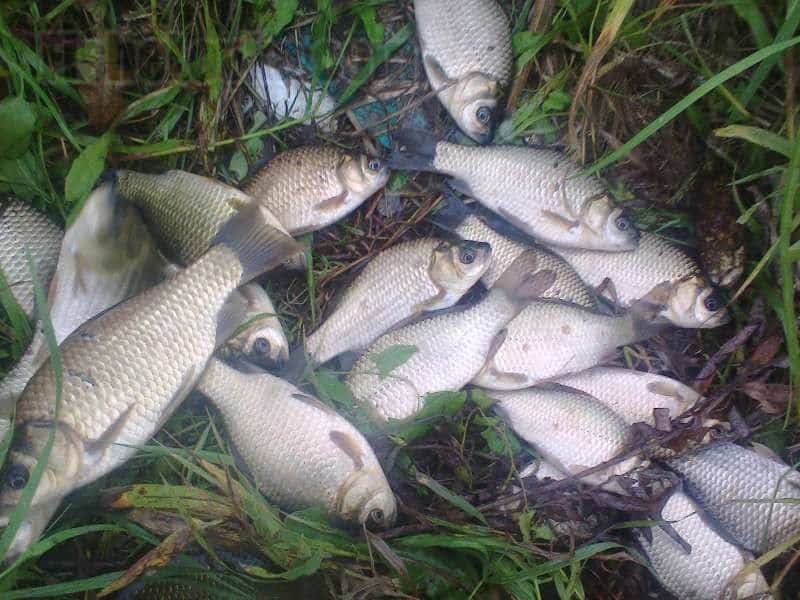Fishing in May for crucian carp is a gambling hobby. In this
spring period, especially large individuals bite, they go to shallow water, where they eat off after hibernation and conduct their mating games before spawning. What tricks and nuances of fishing will help the angler not be left without a “trophy”, what you need to know about the habits of the May crucian carp, what tackle to use for fishing and what baits to offer?
- Features of the behavior of the May crucian
- Spawning carp
- Bite variability
- When the crucian carp begins to peck in May
- Where to look for crucian carp in May
- How to play out
- Tackle and bait for catching crucian carp in May
- Fishing for crucian carp in May on a float
- How to catch crucian carp in May with feeder tackle
- Fishing for May crucian carp with donka
- Spring fishing
- Поделиться ссылкой:
Features of the behavior of the May crucian
Crucian carp is the most common type of freshwater fish, lives in areas of stagnant water, smart, cautious and fastidious.
Fishing for it is not so easy. The behavior of the fish depends solely on the habitat conditions and weather of the region. In some areas, pre-spawning zhor falls in May, and somewhere it spawns and dies down. Fish activity increases even at a water temperature of + 8 ° C. Shallow lakes and ponds thaw faster. Deep water bodies take longer to warm up, so the spawning time will move back to mid-May. In colder climates and flowing lakes with flowing spring waters, spawning often takes place in early June.
Spawning carp
Crucian carps are inhabitants of muddy reservoirs. The silvery species is also found in quiet river backwaters, oxbows. It is less whimsical, for spawning it is enough to warm up the water to +12 – 14 ° С. Golden individuals spawn at + 16 ° С. Individuals who have reached the age of 4 years participate in spawning. Spawning lasts only 2 weeks, at which point the crucian carp stop feeding. They stand in reeds, thickets of reed mace or other dense vegetation, as it serves as a haven for eggs.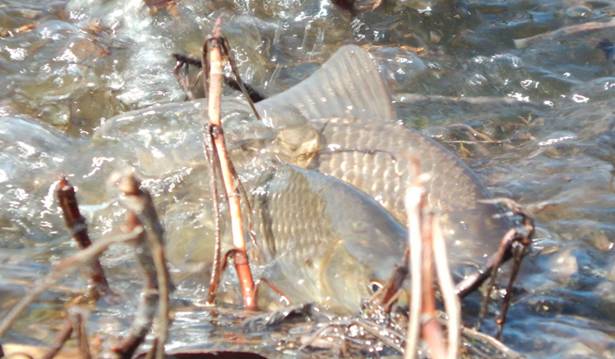
Bite variability
It is very difficult to predict the zhor of spring crucian carp. Catching them at one point is wrong, biting in May is unstable. Within the boundaries of one reservoir, in one flock, it sharply increases with warming, in another – gradually. Even in one place, but on different days and times of the day, the crucian does not take the same way. The reason is fish migration. One flock left, another came to replace. The intensity of bites is also influenced by:
- The weather conditions in the region are different terms for getting out of suspended animation.
- Water temperature – spawning time is different.
- Neighboring species affect the amount of natural food.
- The transparency of the water, the crucian carp sees perfectly and is careful.
Each body of water is a mystery. Influence on biting and underwater currents, the phenomenon of thermocline, discharge from bottom sediments, the presence and movement of the food supply.
Important! Do not look for large individuals in small ponds where predators are absent. Due to the uncontrolled population, the crucian carp does not have enough food for growth, but it bites in such reservoirs continuously.
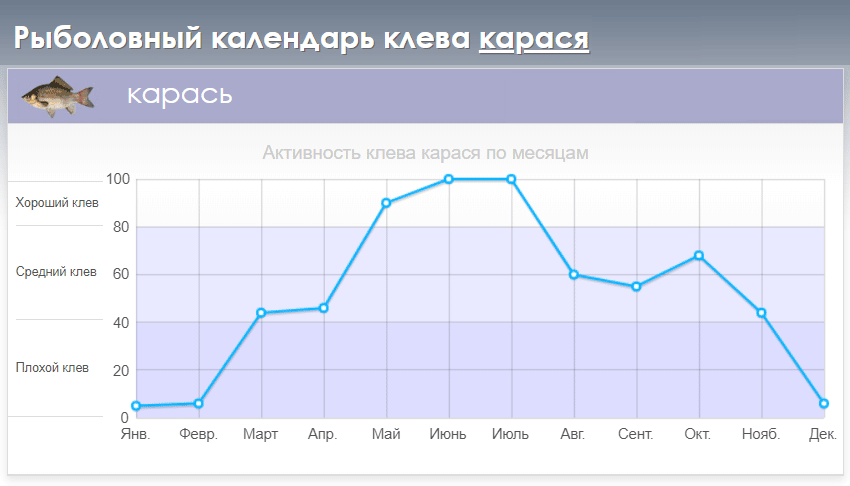
When the crucian carp begins to peck in May
It is worth going for crucian carp if the weather is warm and sunny. The water has warmed up, and the fish takes from the shore even in the morning from 10 o’clock, especially from the leeward side of the reservoir. By lunchtime, the bite decreases. In the evening – resumed, but less active. In the cool after the May sun, biting in calm areas of the reservoir begins at 12 – 16 o’clock, but farther from the coastline.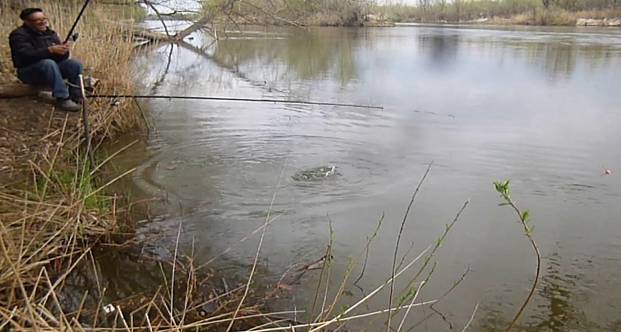

Where to look for crucian carp in May
It is easy to find crucian carp in May – it is located where it is inconvenient to catch it. He loves to swarm in the silt in shallow water, looking for various larvae and worms. The fisherman will detect it by the raised turbidity, air bubbles that float from the bottom, and swaying vegetation.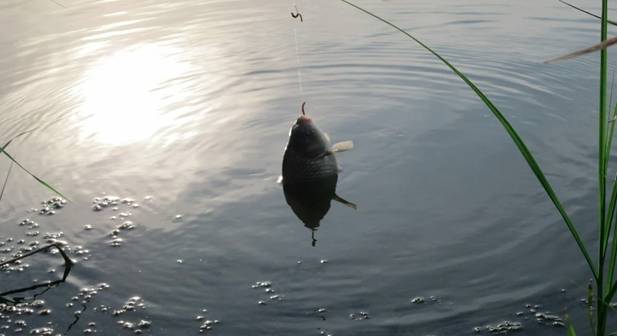
- near snags and snags;
- “Windows” in thickets of reeds and water lilies;
- depth differences with a silted bottom.
Small areas overgrown with young reeds at the exit from narrow bays are considered ideal. Large individuals always feed there, because crucian carp is very fond of “gnawing” reeds. The best bite is expected in illuminated areas at a depth of 1.5 meters. “Trophy” crucians prefer to stop more often at steep shores than at gentle ones.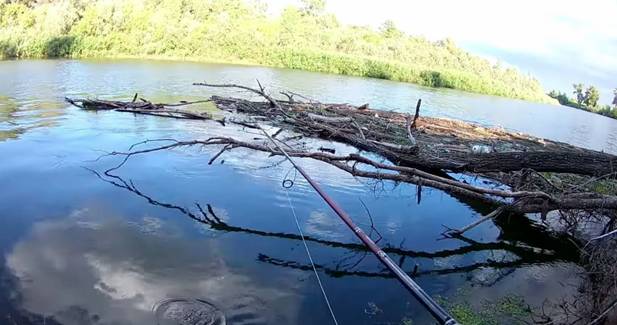
How to play out
In open water, crucian carp is shy, especially in clear water, so fishing is successful only in complete silence and caution. If it takes the bait, then the float either sinks right away, or leads to the side, or sinks and floats – they immediately make sure to smoothly cut. The lip of the crucian carp is tender and breaks from a sharp jerk, and the fish leaves. In thickets or near snags, he feels safe, so he takes the bait confidently. You shouldn’t be on ceremony, because there is a high likelihood of a catch. Give the carp some slack – you will be left without equipment. The frightened fish will dash into the grass or under the snag.
Tackle and bait for catching crucian carp in May
When choosing tackle, local characteristics, the size and depth of the reservoir, and the activity of crucian carp are taken into account. At the coastline, crucian carp is excellently
caught on a float , at a long distance – a donka or a feeder is used
. A fishing rod with a side nod and a jig works in the “windows” of the thickets.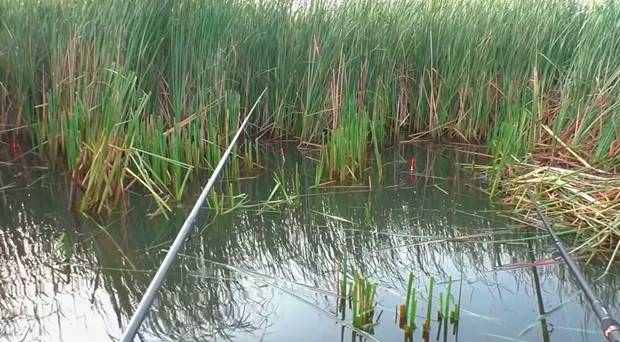
maggot ,
bloodworm , shitik, dung worm) and vegetable (semolina,
dough ,
millet ,
pearl barley , peas,
corn ). Special baits (
boilies ) allow you to catch the largest crucians in a particular reservoir, cutting off frank trifles. At the end of May, many fishermen also fish on foam treated with flavoring. Do you need
bait – the fisherman decides on his own. In May, flocks migrate more often across the reservoir. Sometimes, in order to keep the “large” longer, it is worth feeding. The main thing is not to overdo it with flavorings. In May, the aromas of anise, vanilla, hemp, chocolate, caramel are used.
In some reservoirs, it happened to lure crucian carp with kerosene, with which crushed brick is impregnated and kneaded into a bait.
Using the drive, pay attention to the bottom of the reservoir. Complementary foods should match the color of the bottom so as not to scare the fish away. For darkening, use bottom soil, cake or rye bread.
Fishing for crucian carp in May on a float
Fishing with a float is a fishing classic. An uncomplicated tackle fits perfectly in May. Hungry crucian carp, concentrated in the coastal strip, is very cautious (at depths of up to 1 meter). Transparent water deprives him of shelter, he hides in old vegetation. Fishing here must be done carefully, there is a high risk of snagging, breaking the rig and scaring off the crucian carp itself. The best choice is a plug rod, which allows you to quietly lower the bait. Ideal for fishing under overhanging bushes and tree branches, in bad weather and wind.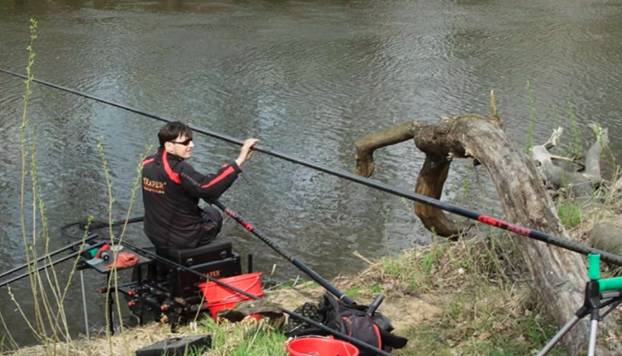
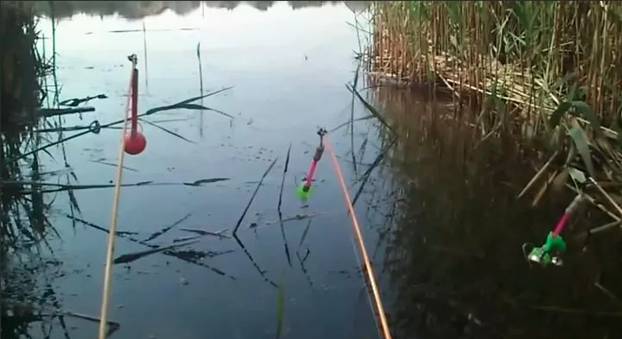
Fly and
Bolognese fishing rods 5 – 6 meters – a universal option. The fly rod is light, strong (test 15 – 20 g), the rigging is simple. It is easy to move to another place with her. In calm weather, the length of the line is 0.5 meters longer than the rod for further casting. In windy, on the contrary, it is shorter, then the rig turns out to be thrown easier and more accurately. The main line is Ø 0.25 mm. For leaders, the Ø is 0.05-0.1 less than that of the main line. Hooks 10 – 14. Bologna tackle is slightly heavier. It is equipped with guides and a spinning reel, opening the spool of which makes a long cast. For a “lapdog”, a monofilament line diameter of 0.2 – 0.22 mm is enough, a leader is 0.1-0.15 mm.
Advice! If you want more than just a catch, but also a comfortable fishing experience, try carbon rods. They are lighter than carbon or fiberglass.

Advice! If you immerse the drop-shaped float until only the antenna remains above the water, then the most careful bite will be visible.
Leashes, 15 – 20 cm long, are tied with a loop or Albright knot. Hook – Clinch knot.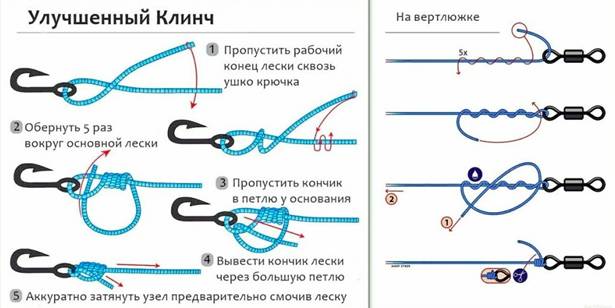
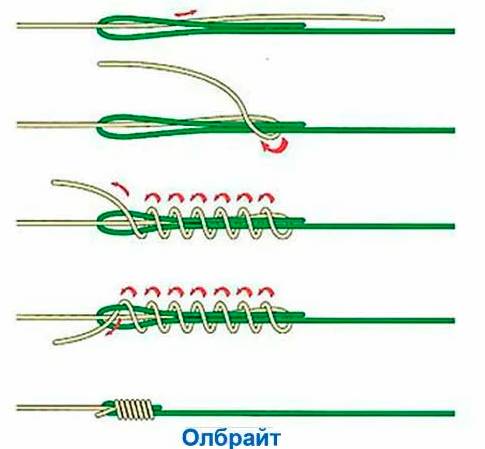
How to catch crucian carp in May with feeder tackle
There are disagreements among fishermen, some do not imagine fishing for crucian carp without bait in the fishing place, others consider it completely unnecessary and are looking for a flock with their own movements. Feeder tackle allows you to deliver the bait far from the shore immediately to the bottom and at the same time treat the crucian carp with bait. A feeder is used to catch crucian carp anywhere in the reservoir, after feeding the place of fishing.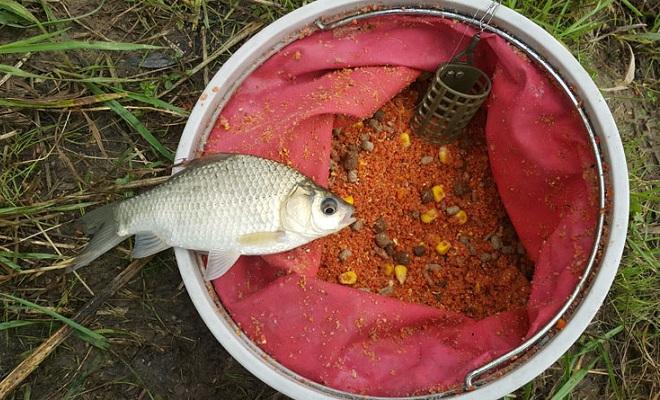
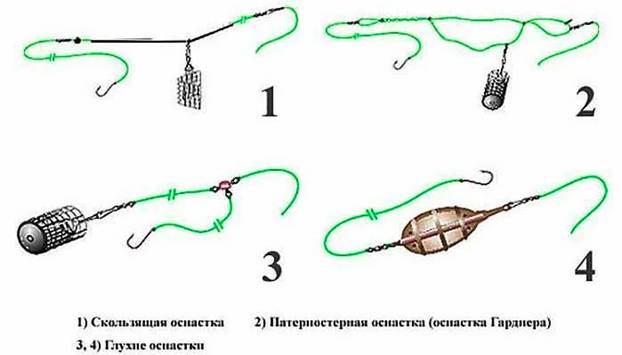
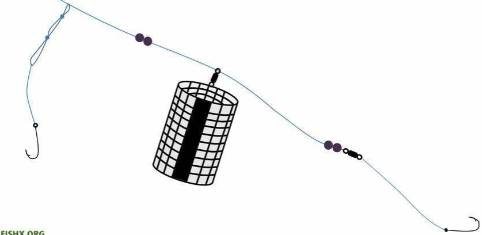
Advice! For a leash, it is advisable to take a line of blue or green.
In a pond with a muddy bottom, according to feeder fishermen, a paternoster will be the best rig. In this case, the leash remains on the surface. True, the feeder, with a high probability, will be in the role of an ordinary donkey. In order for the bait to be clearly visible on the muddy bottom, you need to attach a foam ball to the forend of the hook, string a worm, and it will “float” near the bottom. Feeder bait: sunflower cake, bread crumbs, cookies, semolina or ground rolled oats. The flavor is added directly on the shore. Given the capriciousness of the crucian carp, it is better to have several different types of baits. Catching crucian carp in May on a feeder – new video: https://youtu.be/g0LKDEqgSLc
Fishing for May crucian carp with donka
When the crucian carp is most active, it is possible to catch it on the donk. Its structure is similar to the feeder, only a sinker stands in place of the feeder, and a bell informs about a bite.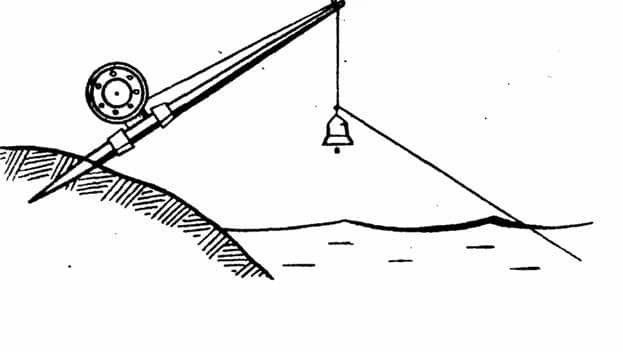
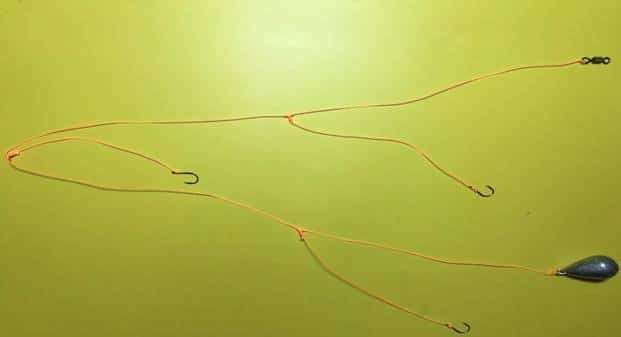
Important! When fishing for crucian carp with bottom gear in May, when the water is still clear, you should not measure the depth, making unnecessary casts, scaring the fish away.
The border between vegetation and clear water is considered a promising fishing spot. If you can see the flock, you should not throw the tackle there, it is better to move a couple of meters to the side.
Spring fishing
There are several modifications of bottom gear for crucian carp. The added spring-type feeder increases fishing efficiency. Near the feeder there are several leashes, the length of which is shorter than in a regular donk, only 5 – 7 cm. With their help, the number of pecking crucians increases.